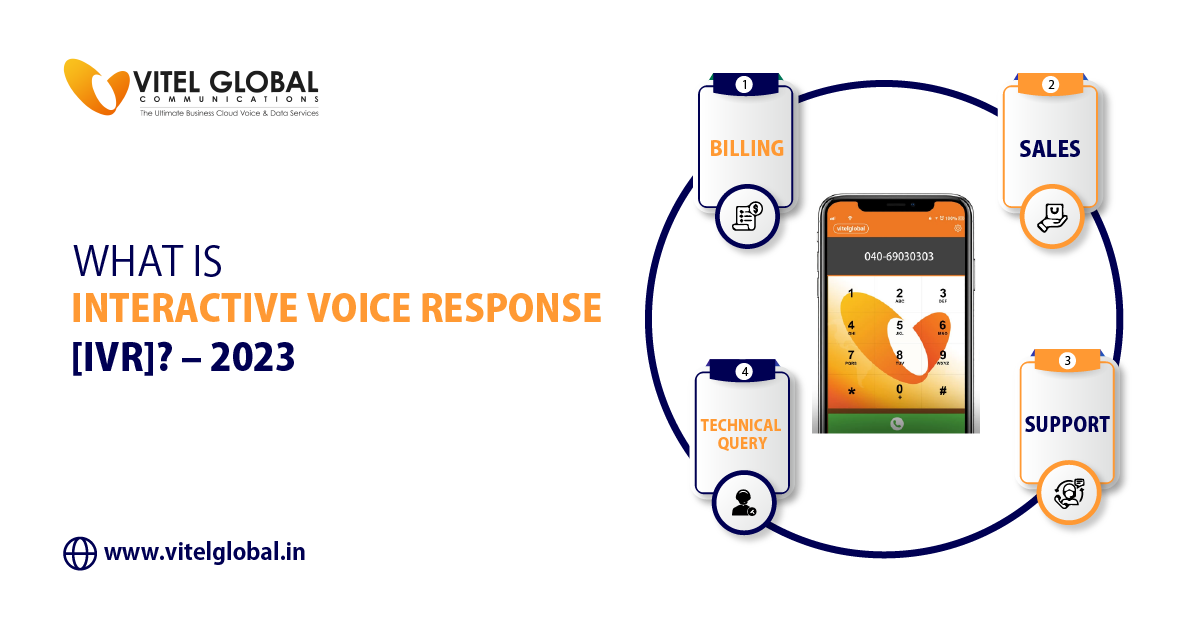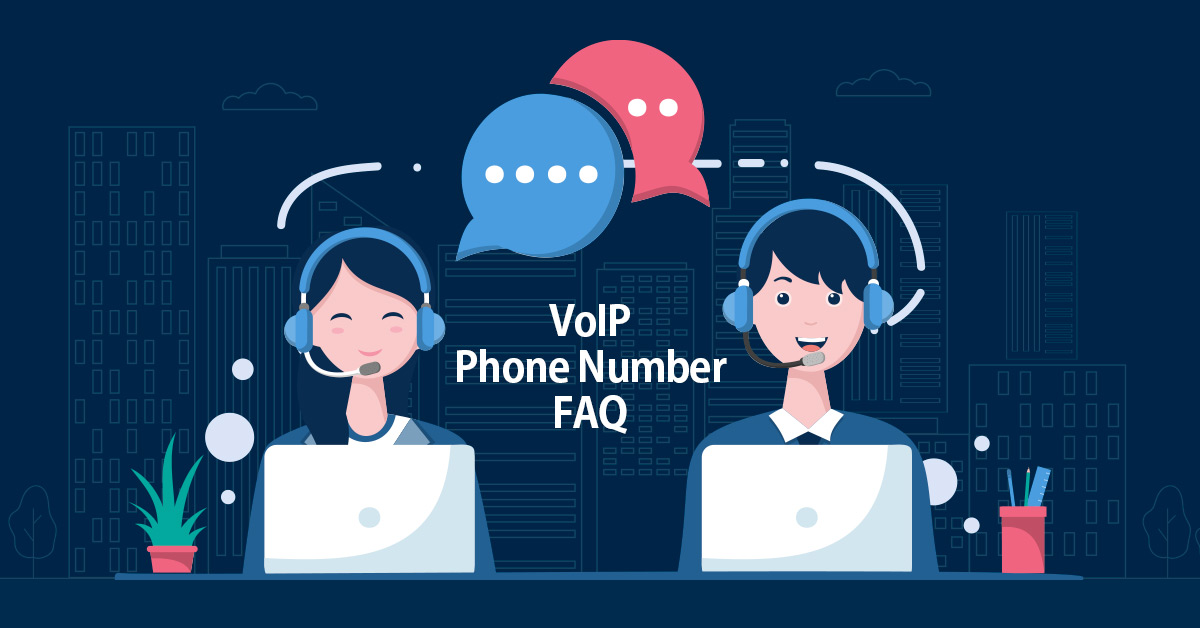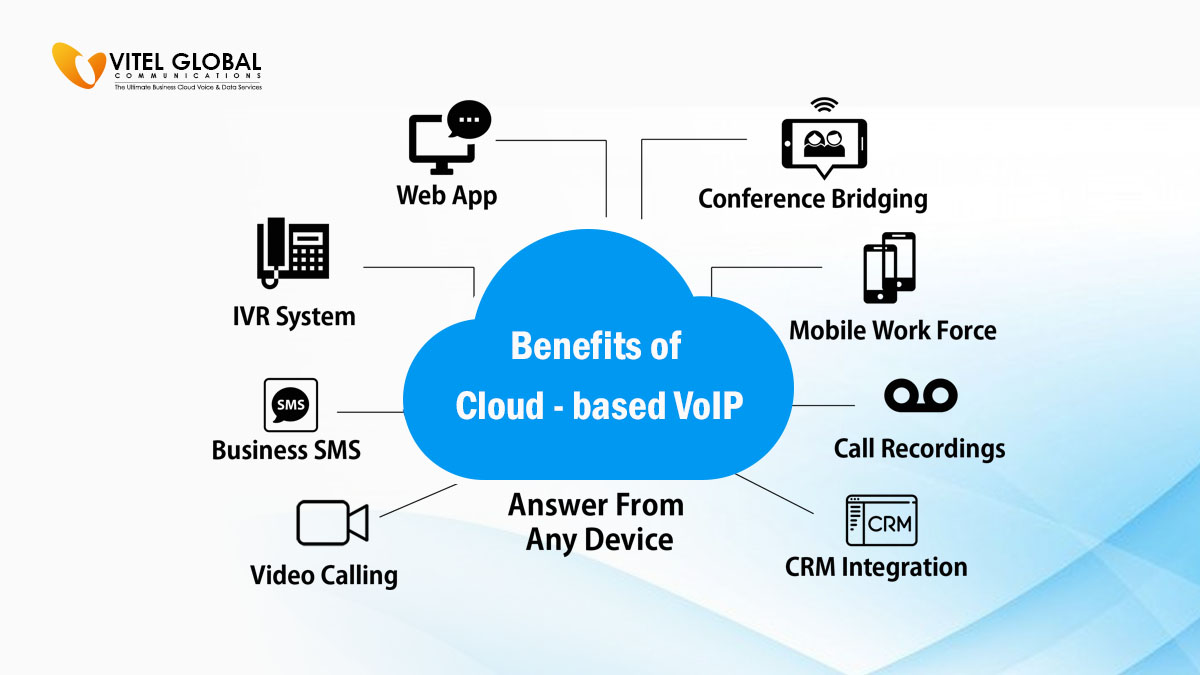Table of Contents
A significant component of a virtual phone system is interactive voice response, which engages callers by providing them with various alternatives (that you can personalize). Based on their comments, it then connects them with a customer service representative.
These services also allow customers to perform simple activities independently, which lightens the workload of customer care representatives. For example, if a user wishes to check the status of an order, the system will ask them for their order ID and then automatically offer the information (without connecting them to an agent).
Real-World Examples of Interactive Voice Response
You may automate fundamental customer service interactions with interactive voice responses.
Receive payments without requiring human engagement, and analyze caller data.
A business often uses cloud phone technology to call the appropriate department. Callers are prompted to enter a number using one of the choices. The caller can choose one of these choices to connect with the billing department, the support staff, and more.
The voice phone system notifies callers of the expected wait time if they request to be connected to an agent, which reduces customer frustration. This telephony also promotes new products, future occasions, or other necessary information.
Additionally, callers have access to a variety of self-service options, including (but not limited to):
- Balance inquiry
- Change your PIN or password
- View account information
- Complete lead forms and surveys
- View product information (price or directory)
- Transfer funds or make small payments
As a result, the agent workload is reduced, and time spent responding to simple questions is saved.
How Does it Work?
You will need a phone system supporting IVR to integrate it into your contact center. An advanced phone system’s most prominent feature is the ability to control the message played to callers and change it at any time. It aids in maintaining a constant voice across all service channels.
Let’s understand how services work:
Step 1: The Caller Dials a Toll-Free Number for Business or Brand
The caller dials the business’s customer service or contact number.
Step 2: The Caller Receives a Pre-Recorded Message
The caller is greeted by a pre-recorded message, which prompts requests for relevant DTMF input via the dial pad.
Step 3: Data Exchange with the Caller
Once the caller has followed the self-service instructions, a straightforward CRM data retrieval is accessible; the caller is given the appropriate information, such as their bank balance, EMI date, and a request to block their card.
Step 4: Join an Agent’s Network
The caller presses 9 to chat with an agent on the interactive voice response agent. The caller is then directed to the appropriate agent or department or is placed in a queue to wait for assistance.
Different Types of Interactive Voice Response Systems?
There are three different types of systems:
- Self-service
- Hosted
- Agent-assigned
Let’s go over each of the three types in more depth.
Self-Service
Businesses can handle substantial call volumes for less money using an advanced system.
It may recognize, direct, and answer callers’ questions without connecting the caller to a live person. However, it routes calls to customer care representatives when the caller requests more assistance.
Hosted
Businesses access the interactive voice response application online after installing a cloud phone solution on a hosted software platform.
It enables businesses to provide uninterrupted service for 24 hours, irrespective of working hours. Additionally, it helps you demonstrate commitment and raise customer satisfaction levels.
Agent-Assigned
You can improve the effectiveness of automated self-service with agent-assisted by inserting a live agent into the session when the application runs into a problem.
Without the caller’s knowledge, the agent may start a conversation with them using pre-recorded lines or even dynamic text-to-speech conversion. By doing this, expenses are reduced, and customer pleasure is increased.
Benefits of IVR System
Adopting a new feature might have several advantages and benefits for your customer service operations.
Listed below are a selection of the more popular ones:
Better Customer Service Interaction
Customers don’t even want to wait a few minutes when they call today. Instead, regardless of how they communicate with you, they want immediate support.
But employing tens of thousands of workers would make responding to every client immediately impossible. Thanks to the automated calling system for letting them know that you care about them and that an agent will contact them shortly.
This auto-responder technology answers callers’ questions, identifies their needs, and directs them to the right person on the first attempt.
As a result, you can significantly enhance first contact resolution (FCR) and do away with the requirement that clients make multiple contact attempts.
Boost Agent Morale and Productivity
This feature does not take the place of contact center agents. It instead makes their life simpler.
For instance, a well-configured automated phone system can drastically reduce the number of calls humans handle simply by asking simple questions.
To further assure that the call is sent to the appropriate agent in the proper department, it works in conjunction with skill-based routing. As a result, the call resolution time is prolonged, and agent fatigue is avoided.
24*7 Availability
The voice service is not dependent on humans. Thus, once programmed, it will continue to function unless otherwise specified.
Customers may call a business after business hours and be greeted by an automated message depending on how it is set. And the fact that it can accept and respond to simple inquiries.
Reduces Manual Failures
These are automatic, unlike humans. Hence there is no chance of human error. Additionally, it does away with the necessity of making judgment calls, which causes most call-handling mistakes.
You can be sure that every caller will have the same branded experience by automating how your business accepts calls.
How to Pick the Top Virtual Assistant System for Your Business
You must pay attention to the appropriate variables when selecting the best service. It comprises hosting (on-site or in the cloud), call-routing ability, chat capabilities, and more.
Let’s understand them in moral detail.
Analysis and Reporting Tools
Effective customer service must include real-time analysis and thorough reporting on every campaign. As a result, ensure the system you choose satisfies these requirements. The reports will also help you find and address strategy flaws, enabling you to improve client experience gradually.
A Cloud Platform
The decision to use a cloud voice system has become more crucial than ever in the modern remote work environment. Choosing a cloud system will maximize the benefits of the voice process because cloud technology is innovative.
For instance, a cloud-based interactive voice platform provides easy scaling up and down in business development while preserving your current system with evolving technology.
Capability to Route Calls & Maintain Client Data
If a customer calls the hotline number and asks to talk with a sales team member, this software must direct calls to the sales team, not the IT department or other departments.
This system you choose should also be able to store customer information quickly and only need users to submit their information again each time they make a call.
Conversational Capabilities Powered by AI
Invest in an automated phone system service with artificial intelligence-powered conversational capabilities. Customers will be able to rapidly contact the most experienced contact center employee without switching between departments or going through redundant call routing, thanks to the reduction and simplification of these menus.
Customization of IVR Call Flow Design
Traditional systems frequently use a complex call flow design process.
However, this service must feature an easy-to-configure call flow mechanism and a drag-and-drop user interface (UI) because call flow requirements change over time.
You’ll save time and be able to swiftly modify your call flow or in response to shifting client needs without having to invest many resources in doing so each time.
Updates to the Waits
The client must place it on hold until an agent is available.
And when that occurs, the least you can do is keep customers on hold. Inform them how long they will have to wait and details about the queue.
Support for Multiple Channels
Omni channel capability is a crucial component of the interactive voice response system for small businesses. This system must compile customer discussions from different media and channels into one location so that contact center representatives can better comprehend the problem and offer specialized support.
Closing Thoughts
The proverb “first impressions are the last impressions” is accurate in business. There is a reasonable probability that customers will only buy from you again if they are satisfied when they phone your company for the first time.
With an interactive voice response system, you can instantly improve callers’ experiences while directing them to the appropriate department.







